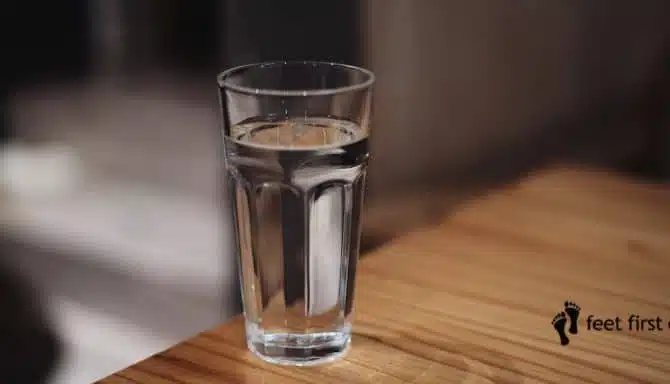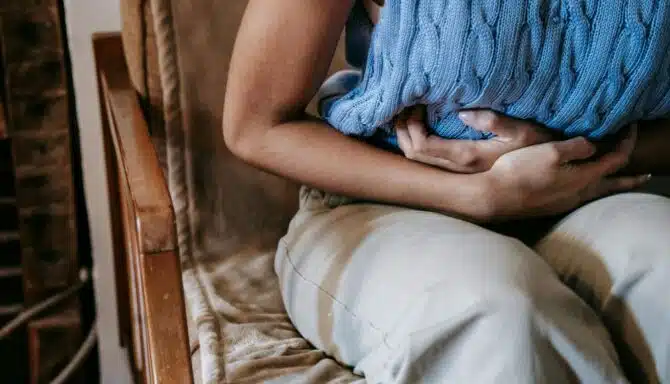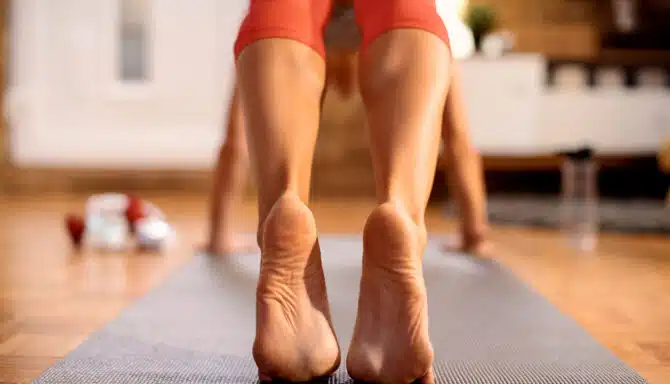June 12, 2025
When we talk about healthy habits, we often focus on nutrition, mental health, or overall fitness. But what about your feet? These often-overlooked heroes carry you through life — and they deserve some attention, too.
Incorporating a few gentle foot mobility drills into your morning routine can help improve flexibility, reduce stiffness, and set you up for a pain-free day. Let’s explore a few simple daily foot exercises that support longevity and mobility, all in under 10 minutes.
Why Morning Foot Rituals Matter
After a night of rest, it’s normal for your feet to feel stiff or tight. That’s because circulation slows down when we sleep, and our muscles and joints aren’t being used. A quick morning routine for foot health helps:
Improve blood flow
Gently wake up foot muscles
Prevent long-term issues like plantar fasciitis or joint stiffness
Support better balance and stability throughout the day
Plus, it feels great — and your feet will thank you!
Your 5-Minute Morning Routine for Foot Health
These beginner-friendly exercises can be done from your bed, the bathroom counter, or even while you’re waiting for your coffee to brew.
1. Toe Spreads (1 minute)
https://youtube.com/shorts/gOwgyrmU6hM?feature=shared
Sit or stand comfortably. Spread your toes apart as wide as you can, then release. Repeat 10–15 times.Why it helps: Improves foot strength and activates the smaller intrinsic foot muscles that support balance.
2. Ankle Circles (1 minute per foot)
https://youtu.be/qaatVpZy2ek?feature=shared
Lift one foot off the ground and gently rotate your ankle clockwise 10 times, then counter-clockwise 10 times. Switch feet.Why it helps: Promotes circulation and joint mobility to counteract morning stiffness.
3. Towel Curls (1–2 minutes)
https://youtu.be/toqnSys_JRw?feature=shared
Place a small towel on the floor and try to scrunch it toward you using just your toes.Why it helps: Strengthens the arches and enhances coordination in the foot muscles.
4. Calf Stretch with Wall or Step (1–2 minutes)
https://youtu.be/utLavyPDnqI?feature=shared
Stand with your hands on a wall or place your toes on a step while your heel stays on the ground. Lean forward until you feel a stretch in your calf and Achilles tendon. Hold for 20–30 seconds per leg.Why it helps: Loosens up the back of the leg and heel — essential for preventing plantar fasciitis and Achilles tendonitis.
Bonus: Gentle Foot Massage
https://youtu.be/BwhGFoHDkUI?feature=shared
Before putting on your socks or shoes, use your thumbs or a massage ball to roll out the soles of your feet. Focus on tight spots in the arch and heel. Just 1–2 minutes can make a big difference.
Foot Mobility Drills = Long-Term Foot Wellness
Incorporating these foot mobility drills into your morning can support not just your feet, but your entire body. Improved foot function leads to better posture, less knee and hip pain, and more stability with every step you take.
And remember — consistency is key. Like any good habit, the benefits of daily foot exercises build up over time.
Feature Photo by Aljona Ovtšinnikova
May 29, 2025
When you think of dehydration, you probably imagine symptoms like dry mouth, fatigue, or dizziness—but what about your feet? It may surprise you to learn that dehydration can directly contribute to foot pain, cramping, and even swelling. Since your feet are at the farthest point from your heart, they rely heavily on healthy circulation and fluid balance to function properly.
Let’s take a look at how your water intake affects your feet—and why staying hydrated is more important than you might think.
1. Dehydration and Foot Cramps
If you’ve ever woken up in the middle of the night with a painful foot cramp, dehydration might be the culprit. Proper hydration is essential for normal muscle function. Without enough fluids, your muscles—especially in your feet and calves—can tighten up unexpectedly.
Cramps often occur when your body is low on essential electrolytes like potassium, magnesium, and sodium, which are lost through sweat. Since water helps regulate these minerals, not drinking enough can increase your risk of sudden, painful cramps in the feet.
2. Hydration Supports Circulation in the Feet
Good circulation is critical for healthy feet. Water plays a major role in keeping your blood flowing efficiently. When you’re dehydrated, your blood volume decreases, making it harder for your heart to pump blood to the extremities—including your feet.
Poor circulation can lead to sensations of numbness, tingling, or a “pins and needles” feeling in your feet. In more severe cases, chronic dehydration could contribute to long-term circulatory problems that make foot pain worse over time.
3. Water Helps Lubricate Joints and Reduce Pain
Your feet contain more than 30 joints, all of which rely on synovial fluid for smooth, pain-free movement. Dehydration reduces your body’s ability to produce this fluid, leading to stiff, achy joints—especially in people with arthritis or other joint conditions.
Drinking enough water each day can help reduce joint discomfort and improve mobility in your feet and ankles.
4. Is Water Retention the Opposite Problem?
Interestingly, dehydration can also lead to swollen feet—but not for the reason you might think. When your body senses it's not getting enough water, it holds onto the fluids it does have. This can result in swelling (also known as water retention) in the feet, ankles, and lower legs.
Staying properly hydrated signals your body that it can safely release excess fluids, helping to reduce swelling and bloating in the feet.
5. Tips to Keep Your Feet (and the Rest of You) Hydrated
Aim for 8–10 glasses of water per day, and more if you're physically active or it's hot outside.
Avoid too much caffeine or alcohol, as these can dehydrate your body.
Eat water-rich foods like cucumbers, oranges, and watermelon.
Listen to your body—if you're feeling thirsty, you're likely already slightly dehydrated.
When to Seek Help
If you’re experiencing regular foot pain, cramping, or swelling—especially if increasing your water intake doesn’t help—it’s time to speak with a foot care specialist. At Feet First Clinic, our chiropodists can assess the cause of your symptoms and recommend personalized treatment options to get you back on your feet comfortably.
Final Thoughts
Dehydration doesn’t just leave you feeling tired—it can seriously impact your foot health. From muscle cramps to water retention, the way you hydrate has a direct effect on how your feet feel and function.
So next time your feet are aching or swollen, take a moment to consider your water intake. A simple increase in hydration might be the first step toward relief.
May 15, 2025
Gut Inflammation and Foot Pain – What’s the Link?
Foot pain is often blamed on overuse or injury—but new research highlights a less obvious cause: gut health. Specifically, gut inflammation and foot pain are more connected than you might expect. When the gut lining becomes compromised, harmful particles can leak into the bloodstream, triggering systemic inflammation.
This inflammation may impact muscles, joints, and soft tissues—especially in the feet, where stress is frequent.
Systemic Inflammation and Plantar Fasciitis
One of the most common causes of heel pain, plantar fasciitis, is already driven by inflammation. But when systemic inflammation is present due to poor gut health, it can make symptoms worse and recovery slower.
People with inflammatory diseases like rheumatoid arthritis or inflammatory bowel disease often experience foot pain, suggesting a deeper, whole-body link. Reducing systemic inflammation through gut care may provide relief for conditions like plantar fasciitis.
Gut Microbiome and Joint Health in the Feet
The gut microbiome—the complex ecosystem of bacteria in your digestive tract—plays a critical role in regulating inflammation and immune response. When the microbiome is imbalanced (a condition known as dysbiosis), inflammation can increase, affecting joint health across the body, including in the feet and ankles.
Emerging studies show a strong connection between gut microbiome and joint health, indicating that good gut bacteria may help reduce chronic foot pain linked to inflammation.
Nutrient Absorption: A Key to Musculoskeletal Foot Health
Beyond inflammation, poor gut health also affects how your body absorbs nutrients, such as:
Vitamin D
Magnesium
Omega-3 fatty acids
These nutrients are essential for maintaining strong bones, muscles, and connective tissues. A gut that’s not absorbing nutrients efficiently could contribute to foot fatigue, pain, or slow injury recovery.
How to Support Gut Health for Better Foot Health
If you're dealing with persistent foot pain—especially conditions like plantar fasciitis—supporting your gut could be a game changer. Here are some steps to consider:
Adopt an anti-inflammatory diet: Reduce processed foods, sugar, and excess alcohol.
Add probiotics and fiber: These help maintain a balanced gut microbiome.
Stay hydrated and active: Movement supports both gut motility and foot health.
Get tested: A healthcare provider can check for nutrient deficiencies or inflammatory markers.
By improving your gut health, you may also be reducing the underlying inflammation contributing to your foot issues.
When to See a Chiropodist
Foot pain shouldn’t be ignored. If your discomfort persists despite footwear changes or home remedies, a professional assessment is key. At Feet First Clinic, we look at the bigger picture—including possible systemic factors like gut health that may be influencing your pain.
Final Thoughts on Gut Health and Foot Pain
The body is more interconnected than we often realize. Research on gut inflammation and foot pain, systemic inflammation and plantar fasciitis, and the gut microbiome’s role in joint health is still growing—but one thing is clear: taking care of your gut may help your feet feel better too.
Featured Photo by Sora Shimazaki
July 25, 2024
Foot pain can be debilitating, affecting our ability to walk, exercise, and perform daily activities comfortably. One common foot condition that causes discomfort and requires attention is crossover toe.
This blog post delves into crossover toe, its symptoms, and available treatment options. First off, we'll explain exactly what is a crossover toe.
What is a crossover toe?
Crossover toe, also known as floating toe or floating fifth toe, is a type of deformity in which the toe drifts out of its normal position and crosses over or under a neighbouring toe. The condition is also known as overlapping toe.
The condition generally affects the fourth and fifth toes, leading to pain, swelling, and difficulty wearing shoes comfortably. However, any combination of toes may become an overlapping toe. Roughly 7% of adults—men and women equally — have overlapping toes of some sort.
Symptoms of crossover toe
Toe pain: Discomfort is often felt at the base of the affected toe, especially when walking or standing for long periods.
Swelling and inflammation: The affected area may become swollen and inflamed due to the abnormal positioning of the toe.
Uncomfortable shoe fit: Shoes may feel tight or uncomfortable, especially in the toe box area where the affected toe rubs against adjacent toes or the shoe itself.
Visual appearance: The affected toe may appear to cross over or under the adjacent toe, giving it a visibly different appearance than the other toes.
Corns: Corns will often form on top of crossover toes due to excessive friction and rubbing on the affected toes.
Causes of crossover toe
Crossover toe can develop due to several factors, including:
Foot injuries: Joint and ligament damage caused by unhealed trauma and foot injuries can change the toes' alignment over time. Additionally, arthritis, including rheumatoid arthritis, can shift the alignment of your toes as it progresses and damages the joints.
Foot structure: People with high arches or flat feet are prone to developing overlapping toes.
Genetics: Overlapping toes may also be inherited. Many conditions that make one prone to developing an overlapping toe, like arthritis and Morton's toe, have genetic contributing factors.
Improper footwear. Wearing shoes that are too short, too narrow or too tight can force the toes into an unnatural position and curl up, which will ultimately lead to the development of a crossover toe.
Treatment options for crossover toe
Footwear adjustments: Proper-fitting footwear is one of the most important ways to manage a crossover toe. Switching to shoes with a wider toe box can ease pressure on the affected toe and reduce discomfort. You should also make sure you have sufficient space at the end of your shoes (typically 1 cm) for your toes to properly splay. If shoes are too short, your toes will curl up. Many companies, like ASICS, APEX and Saucony, offer a wide-width options to give your feet the extra room it needs. Shoes with a mesh or soft upper are also recommended, as this will reduce pressure and friction on the top of the toes.
Orthotics Custom orthotic inserts or pads can help support the arch and redistribute pressure across the foot. This can help promote proper toe alignment and reduce pressure on the crossover toes so that they don't get worse.
Foot and Toe exercises: Performing specific exercises to strengthen the muscles and tendons around the toes can improve flexibility and prevent the condition from progressing.
Splinting or taping: A foot specialist can tape the affected toe to encourage proper alignment and reduce pain. You can also buy a splint or toe spacer to help stabilize and align the toe.
Corn and Callus Treatment: Since crossover toes are extremely prone to corns and calluses, it is very important to see a licensed chiropodist for routine foot care. A chiropodist can safely debride any corns and calluses on your crossover toe, which will reduce pain and irritation.
July 15, 2024
Just like the rest of your body, your feet change with age. There are many age-related foot conditions that can target anyone at any time, but are more likely to occur in our golden years. With proper care, foot health in older adults doesn’t have to be too challenging and your aging feet can step out in downtown Toronto with confidence (and more importantly, in comfort).
Why Aging Feet Become Vulnerable
Studies show that one of the reasons musculoskeletal foot conditions, toe deformities and ankle problems are more common in older adults aged 65-74 is due to ill-fitting footwear.
Poorly fitted shoes not only wreak havoc on your feet, but if you’ve worn them for double the amount of years a younger adult has, then they’ve had more time to cause foot issues! The math speaks volumes and is one of the many reasons wearing good shoes from a young age is so important.
A change in size and shape also signifies your feet are getting older. Your body’s ligaments and tendons lose their ability to “spring back” which causes fallen arches (flat feet). This also relates back to ill-fitting footwear; if you aren’t aware of your foot changes, you can wear shoes that are too small without realizing it.
Your skin also becomes thinner when you get older, and your nails more brittle and fragile. Your toenails can also get thicker, but not in a healthy way. Their weakening can invite unwanted problems like fungal infections and skin conditions.
Lastly, it's only natural for a little wear and tear to set in after years of walking on your feet - after all, we only get one pair! This can cause degradation in many of the 33 joints in the foot.
Common Foot Ailments In Elderly People:
Bunions
Hammertoes
Plantar fasciitis
Osteoarthritis
Gout
Type 2 diabetes and diabetic neuropathy (commonly occurs after age 45)
Calluses
Corns
Toenail fungus
Elderly-onset rheumatoid arthritis (a different type of RA than the one that targets younger adults)
Foot Care Tips and Footwear For Seniors
Managing foot problems and caring for aging feet is achievable when you do the following:
Wear shoes that fit well! Many foot conditions feel better and more manageable when you wear orthopedic shoes, shoes for sensitive feet or the best shoes for seniors.
Also, find shoes with the right level of shock absorption to protect your joints.
Consider custom orthotics.
Perform regular, low-impact exercises and stretches to keep your feet strong and flexible. Yoga and swimming is a great idea, but there are also exercises for arthritis.
Keep your feet clean and moisturized.
Get medical pedicures to maintain your nail health.
Manage conditions like gout with proper dietary health and learn the role of nutrition in foot health.
Try other products and medical devices like bunion pads, correctors, etc.
Learn more about age-defying foot care.
November 13, 2023
Stretches for foot pain on the top of the foot can be a simple and easy way to reduce pain and even reduce the risk of injury. Some of the illnesses or conditions that can be helped are osteoarthritis, tendon soreness, bunions to name a few. Stretches can also be relaxing and they can give support and stability. Exercises for top of the foot pain will target:
The tendons that run along the top of your foot (the extensor tendons).
The tendons underneath your foot (the flexor tendons).
The very small and important tiny muscles within your foot- called the intrinsic muscles
But...there are important things to keep in mind before you start:
1. Stretches, while helpful, might not be the "cure-all" or "prevent-all". If you have pain, then something is causing that pain. It is usually wiser to find out what's causing that pain first from a qualified foot professional.
2. Sometimes reading about stretches or seeing a video on stretches might not convey everything that you need to know, like positioning and form, how long to hold the stretches, and what signs to look for if something is going wrong.
3. Stretching is not suitable for some conditions, like fractures and gout, no matter how many times you do them. In fact, sometimes stretching can make things worse. So, again, check with a qualified foot professional first to make sure you're doing the right stretches and exercises for your foot condition.
4. Pain is not gain. You should never feel pain when stretching. Stretches usually display a very mild tightness in the target area - do not extend any further beyond that point. You also want to make sure you hold that stretch for a certain amount of time - usually about 10 seconds.
5. If you do a stretch or exercise for one leg, make sure you do it to the other too.
6. Sometimes stretches are only part of the treatment or prevention equation. If you stretch perfectly and then wear flipflops daily, you might be wiping out the "goodness" of the stretch. You might also need additional help (like orthotics, manipulation or other treatments) to help out your foot pain.
Let’s explore the top exercises and stretches for the prevention of pain on the top of your foot, and ultimately some foot pain relief!
Exercises for Pain on the Top of your Foot
Lets start off with a really nice and fun exercise that helps the intrinsic muscles within your foot. This helps with balance and support. So what do we do?
Sit on a chair
Place small objects close to you on the floor, like pens
Place a bowl on the floor and try to pick up the pens with your toes and then place the pens into the bowl
You can see how its done in our video here:
https://youtube.com/shorts/5PCZuM5E6RU?si=nWvrIe_pIuS3sEY1
Toe Flex and Raise
This exercise works the tibialis anterior, a large muscle on the front of your leg that can have an impact on top of the foot pain. As a bonus, it can help strengthen your ankles and treat plantar fasciitis.
While standing, flex your toes high up towards the sky.
Move forward so you are on your tiptoes.
Lower yourself back slowly.
Repeat the movement 15 times.
Click here to see a Feet First Clinic demonstration!
Towel Scrunches
This exercise, also called toe curls, is all about keeping the top of your feet and toes strong. It is similar to the intrinsic muscles video above. You’ll need a towel or blanket (or any fabric you can pick up with your toes).
Stand up with your feet flat on a piece of material and keep your heels anchored to the floor. You can also sit on a chair as long as you can do the same movements with your feet.
Scrunch your toes while grasping the material, pulling it towards you, almost like you are trying to pick it up with your toes. Make sure your heels stay firmly planted on the floor as you do this.
Try the movements 15 times each, or more if you’re comfortable. You can also try two feet at the same time, or alternate.
Click here to see a Feet First Clinic demonstration!
Toe Splay
This is one of the top exercises for improved mobility. It helps the small musculature of your foot and (as an added bonus) is also one of the easiest to perform!
Stand up
Spread your toes apart
Bring them back
The following is a video from the Alexandra Hospital SC Podiatrists demonstrating the Toe Splay
https://youtu.be/2CDrjo_duzM?si=Od3bqN61UA8Xzvln
Great Toe Extension Stretch
This is a great exercise for arthritis, which often plagues the top of the foot with aches and pains.
While sitting on a chair, place the foot experiencing pain on the top of your other knee. If both feet are painful you can alternate.
While firmly holding your heel with one hand, use the other to pull your big toe back towards your ankle.
Wait until you can feel the stretch in the bottom of the foot (don’t worry, it still helps the top of the foot too!).
Repeat two to four times.
Switch feet and repeat.
MyHealth Alberta provides an excellent image reference for this exercise:
High Arches Stretch
How about if you have high arches? Sometimes they can be painful but luckily there is an exercise to help:
Sit on a chair and cross one foot over the opposite knee
Grab the top of the crossed foot and then gently pull the foot towards your body
You should feel a mild stretch on the top of the stretched foot
Hold for 15 seconds and repeat 3 times.
You can see what it looks like here:
https://youtube.com/shorts/-EeyHTdkrEs?si=1tMP8DCowJQUpPCN
Top of the Foot Stretch
Given its name, this stretch is pretty straight forward in terms of how it can help your top of the foot pain, but it may also help with shin pain. This stretch has different variations but we’ll keep it as simple as possible. One thing to note: Be careful! The chair can slip, so we recommend doing this with your chair placed a wall.
Sit at the very edge of a chair.
Extend one of your feet back with the top of the foot facing the floor and the knee pointing downward.
Gently press the top of the foot and toes against the floor until you feel the stretch working.
Repeat this movement ten times or less if you need, and alternate between feet.
Athletico shows us how to do this stretch:






